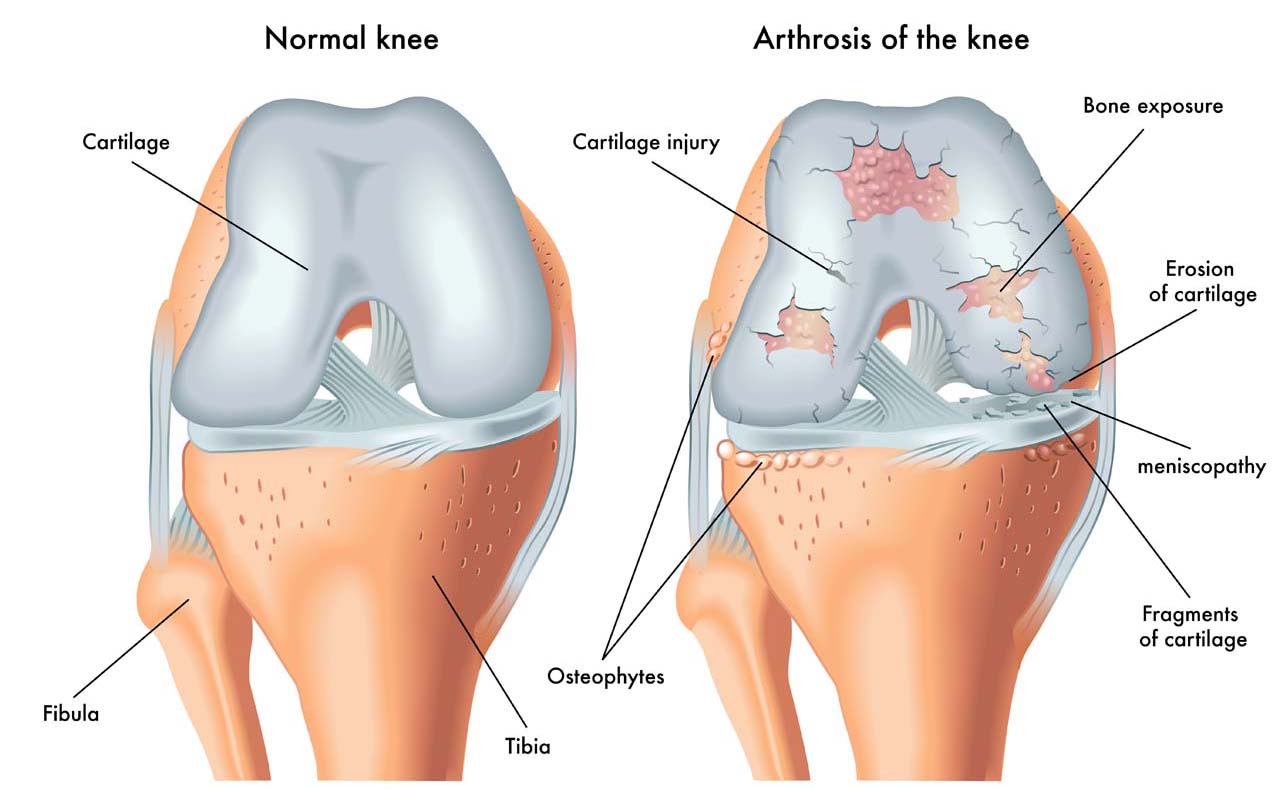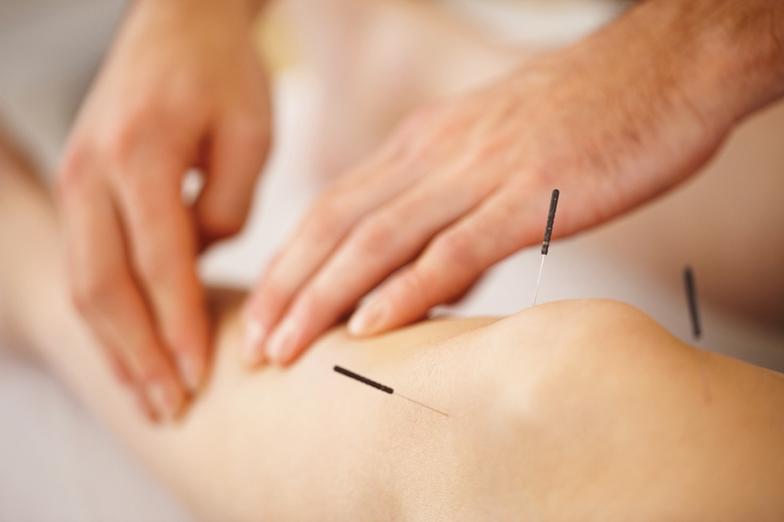Knee Pain & Osteoarthritis

Question: What is osteoarthritis?
Answer: Osteoarthritis (OA) is the most prevalent form of arthritis and occurs especially in the knee joint. OA affects nearly 6% of all adults, and women are more likely to get it than man. A healthy knee joint is protected by cartilage, so that the bone surfaces can move together painlessly and with low friction to each other. But when you have OA in the knees, cartilage decreases in thickness and quality, and it becomes thinner and softer, and cracks may occur and cartilage eventually crumbles off. With time, cartilage will disappear, and without the help of cartilage, the bone surfaces will rub together which stimulates bone growth, leading to bone spurs in your knee. Pain and stiffness and difficulty in functional day to day activity is the result.
Question: Who gets knee osteoarthritis?
Answer: OA can happen to anyone! But some people are more at risk than others.
Risk Factors are:
- female>male
- 40 years old +
- obesity
- joint hypermobility or instability
- sport stress with high impact loading
- repetitive knee bending or heavy weight lifting
- injury to the knee joint
- family history
Question: Signs and symptoms of osteoarthritis
Answer: patients complain of localized joint pain that worsens with activity, and relieved with rest. Knee may lock or give way. Stiffness in the knee in the morning (30 minutes), and pain worse at the end of the day compared to the beginning.
Question: What does knee osteoarthritis look like on X-rays?
Answer: Knee joint will have joint space narrowing (due to lack of cartilage), osteophyte (bone spur) formation (due to bone rubbing directly on bone).

Question: What are some prevention tips?
Answer:
- Weight loss if overweight or maintaining a healthy body weight.
- Exercise regularly (30 minutes 5 times a day) with low impact activity like swimming and bicycling which will protect your knees. Strengthening your quadriceps muscles with knee extension machine or squats.
- Avoiding injuring your knee by:
- exercise on softest surface available, avoid running on asphalt and concrete
- wear properly fitting shoes that provide shock absorption and stability
- do warm up and cool down after exercise
- keep feet as flat as possible during stretches to avoid twisting knees
- avoid bending knees past 90 degree when doing half knee bends
Question: Can physical therapy help?
Answer: Absolutely! As you know, once you have knee OA and your cartilage is breaking down, your body cannot generate new cartilage. By rehabilitating your knee with a physiotherapist, we can help you slow down further knee joint damage, reduce pain, and improve your quality of life.
We can provide you with:
- individualized exercise program so you can improve your strength around your knee, thereby reducing the burden on your knees and reducing pain.
- Transcutaneous Electrical Nerve Stimulation: A technique in which a weak electric current is administered through electrodes placed on the skin, TENS is believed to stop messages from pain receptors from reaching the brain.
- Hands on techniques that will increase your joint flexibility and reduce stiffness and pain
- Pre-rehabilitation before your knee replacement surgery so you can enter your surgery as strong as possible, leading to the best outcomes after surgery
Question: Can Acupuncture help?
Answer: Many of my patients have found pain relief and improved functional ability after a few sessions of acupuncture. Acupuncture is a holistic treatment approach that has been used for more than 3,000 years. It involves the insertion of extremely thin needles through your skin at strategic points on your body.

Question: Is knee replacement surgery right for me?
Answer: If you have been trying all the conservative treatments (physiotherapy, acupuncture, injections, anti-inflammatory medications) for 6 months and is still experiencing severe pain in the knee that limits your everyday activities like walking, climbing stairs, getting in or out of chair, then it may be the best option for you to consider knee replacement surgery. 90% of people who receive the surgery have improved function and decreased pain. However, it is important to enter the surgery as strong as possible to increase your chances of success, and it is also essential that you commit yourself to a strict rehabilitation process after surgery. Expected post surgery rehabilitation is 3-6 months. Some people might need more time to heal than others.
If you are experiencing similar knee problems, and want to get it assess by a physiotherapist, book an assessment today!
